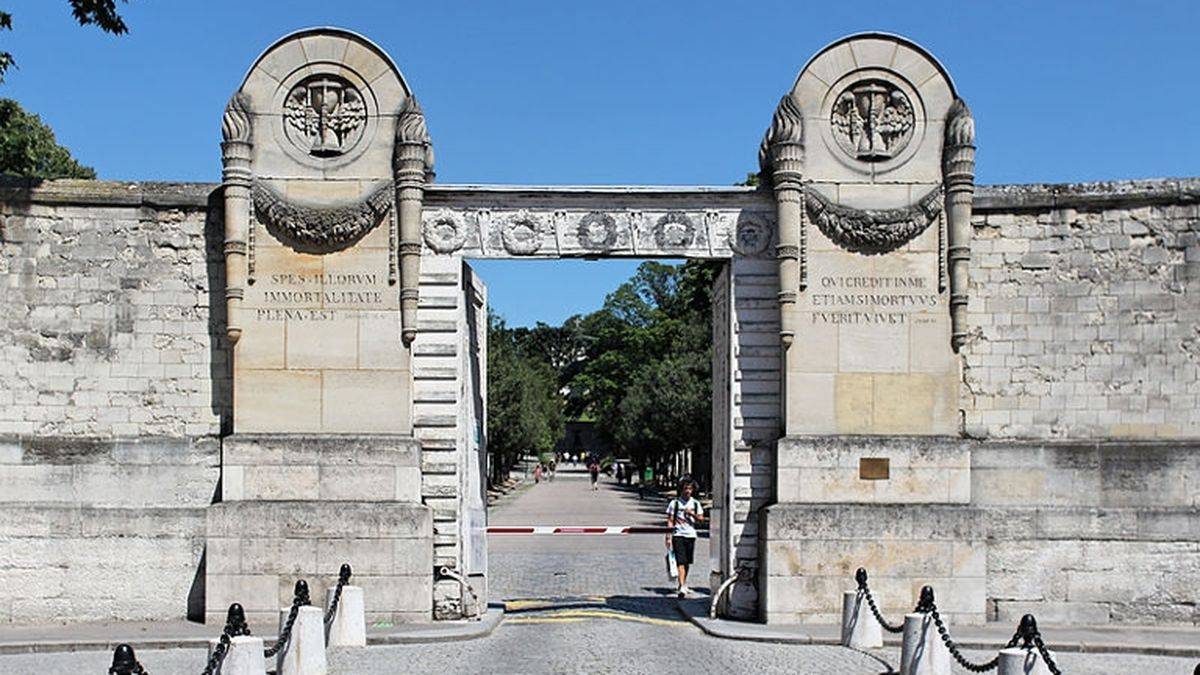 The entrance | ©Coyau / WikimediaCommons / CC-BY-SA
The entrance | ©Coyau / WikimediaCommons / CC-BY-SAThis 45 hectares cemetery houses amazing and nice tombs, real masterpieces created by the finest artists: Visconti, David d'Angers, Garnier, Barrias, Guimard... Come on, let’s journey through time...
In the 12th century, the place was called Champ de l’Evêque ("Bishop’s Field"), because a Parisian bishop owned here his press house.
In the 15th century, a man called Régnault built his house on this estate: this rich spices merchant left his name to the current street, rue de la Folie-Régnault (a folie is a country cottage)!
In 1686, Jesuits from rue Saint-Antoine bought the estate and their superior father, François d'Aix de La Chaise (he was the père Lachaise), moved here, from 1665 to 1709.
Louis XIV’s confessor laid out a fine and vast garden planted with tall, tall trees, with an orangery too. He called the place Mont-Louis, in honour of the king.
But Jesuits were expelled and the estate was sold to Baron family, who kept it until 1804. The land was owned by the prefect of Paris Frochot, and Napoleon I told him to transform it into a cemetery. It was called “Eastern cemetery”, opposed to the Northern cemetery, current Montmartre one. But people started to call it Père Lachaise...
Architect Alexandre Théodore Brongniart (the one who raised the Stock Ecxhange in Paris) wanted to raise a huge pyramid on the location of the old La Chaise’s house... finally architect Godde raised the current funerary chapel.
Everything was completed one year later. They started to translate Molière, Beaumarchais and La Fontaine’s last remains, followed by Héloise and Abélard's remains, in 1820... In 1804, we only had 115 tombs. In 1815, 1877. In 1830, 30 000! Nowadays, more than 600 000 remains rest here...
